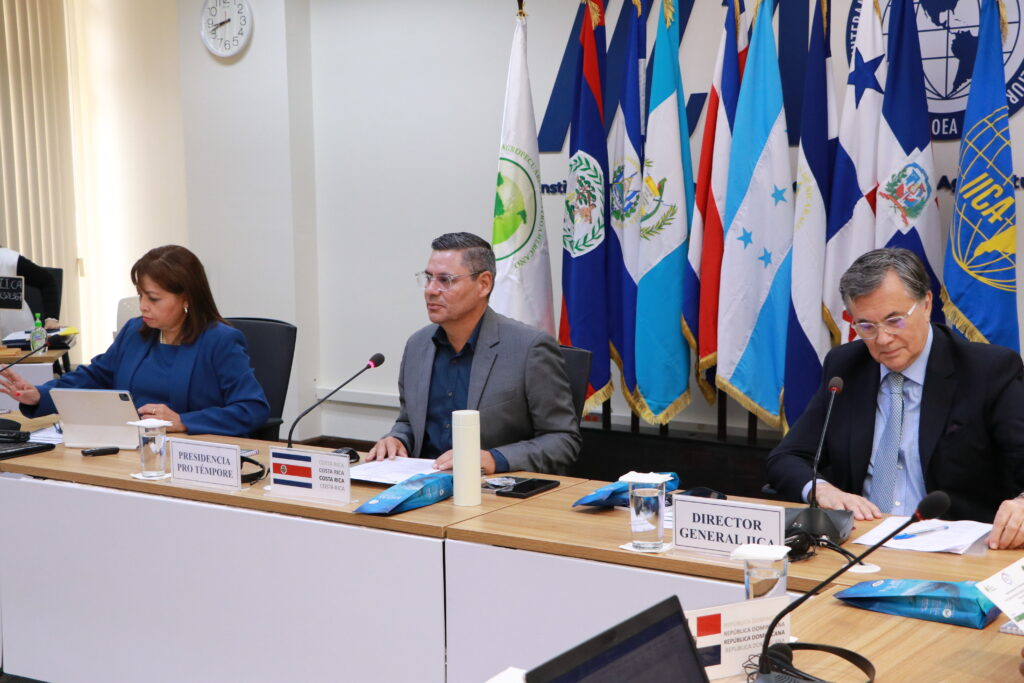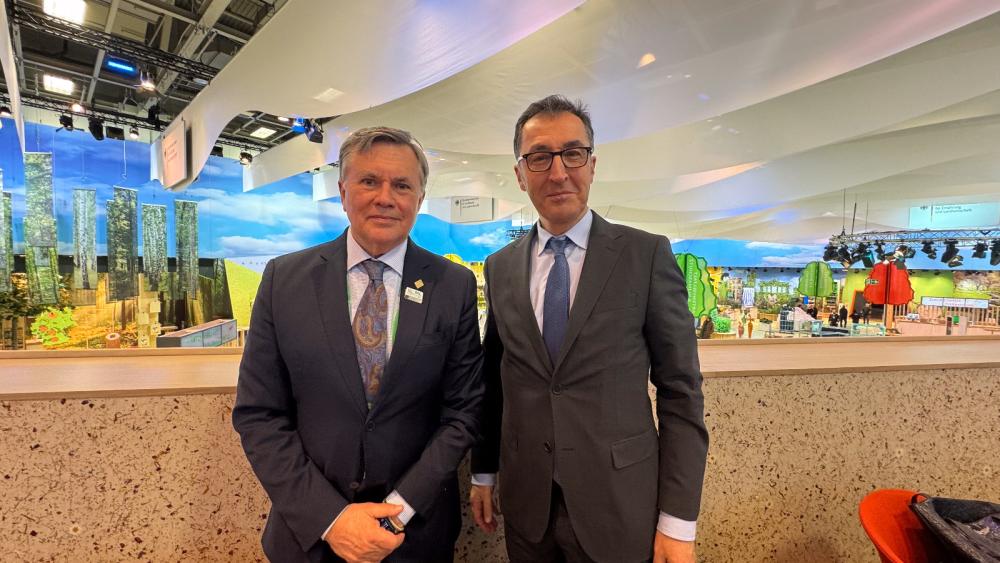De 23 países de América Latina y el Caribe analizados, en 17 es menor la proporción de mujeres que declaran tener teléfono celular. Cuanto mayor la brecha de género en la posesión de teléfono, peor es la inserción laboral. Las mujeres rurales son las menos conectadas.
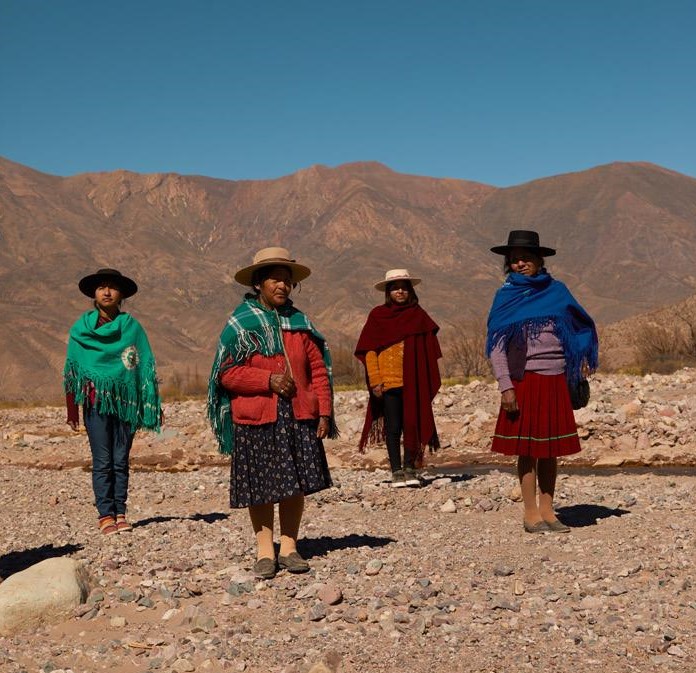
15 de octubre del 2020 (IICA). – Las mujeres rurales son el grupo menos conectado a las Tecnologías de Información y Comunicación (TIC) en la mayor parte de los países de América Latina y del Caribe, reveló un estudio realizado por la Universidad de Oxford con apoyo del Instituto Interamericano de Cooperación para la Agricultura (IICA), el Banco Interamericano de Desarrollo (BID) y el Fondo Internacional de Desarrollo Agrícola (FIDA).
Según el estudio “Desigualdad digital de género en América Latina y el Caribe”, coordinado por la científica social italiana Valentina Rotondi con base en datos de la Encuesta Mundial Gallup, informaciones de los países y de rastreos de la red social Facebook, en 17 de los 23 países de la región analizados, menos mujeres declaran poseer celulares en comparación con hombres. Mujeres de baja escolaridad que viven en áreas rurales son las menos “conectadas”.
Pero no sólo menos mujeres declaran poseer teléfono celular. También hay una variación de acuerdo con la división rural/urbana, ya que género y lugar de residencia interactúan produciendo varias desventajas para las mujeres que habitan en los territorios rurales.
El tema estudiado adquiere especial relevancia en tiempos de pandemia de Covid-19, que aceleró cambios en las formas de producción y en las redes de comercialización de todo tipo productos, como alimentos y otros bienes suministrados por el campo.
Contribuir a revertir la desigualdad que enfrentan las mujeres rurales y facilitar acceso a la tecnología a quienes se dedican a la producción agrícola son dos de los principales desafíos asumidos por el IICA (cuyos cinco programas de trabajo hemisférico para el período 2018-2022 tiene como ejes transversales los temas de Género y Juventud y de Innovación y Tecnología), el BID y el FIDA (que está intensificando su programa de desarrollo e implementación de aplicaciones telemáticas que permitan a los pequeños agricultores y el personal de los proyectos que financia hacer seguimiento de planes de negocio y comercializar productos sin intermediarios en América Latina y el Caribe).
“El estudio revela que el acceso reducido a teléfonos celulares y a internet se suma a diversos problemas enfrentados por las mujeres en el campo, como las barreras a la obtención de financiamiento, a capacitación, empleo formal y propiedad de la tierra”, dijo el Director General del IICA, Manuel Otero.
“Eso muestra un cuadro de desigualdad que obstaculiza que una figura central del campo desarrolle su potencial tanto para la producción agropecuaria como para la estabilidad de su familia”, agregó Otero.
El nuevo presidente del BID, Mauricio Claver-Carone, dijo en su discurso inaugural que la entidad financiera multilateral “debe liderar los esfuerzos para extender oportunidades de empleo a través de la digitalización”, agregando también que el organismo debe ponerse a “la vanguardia de las iniciativas para extender la conectividad en zonas rurales y aumentar su uso en educación, pequeñas empresas, los bancos y el financiamiento”.
El presidente del FIDA, Gilbert F. Houngbo, destacó el papel revolucionario que pueden desempeñar los teléfonos móviles tanto en la reducción de la pobreza y el hambre como en la reducción de la brecha de género en las zonas rurales.
“Las mujeres rurales siguen estando marginadas. La conectividad digital a través de teléfonos móviles es fundamental para que ellas puedan empoderarse mediante el acceso a los mercados, la información y los servicios financieros, especialmente en el contexto de la pandemia de Covid-19. La falta de acceso equitativo a la telefonía móvil amenaza con exacerbar las desigualdades que ya experimentan las mujeres rurales. Si no ponemos solución a este problema, esta brecha podría revertir los logros obtenidos con tanto esfuerzo en materia de igualdad de género en las áreas rurales, lo que iría en detrimento del desarrollo rural en su conjunto”, aseguró.
DESIGUALDAD EN LA POSESIÓN DE LA TELEFONÍA CELULAR
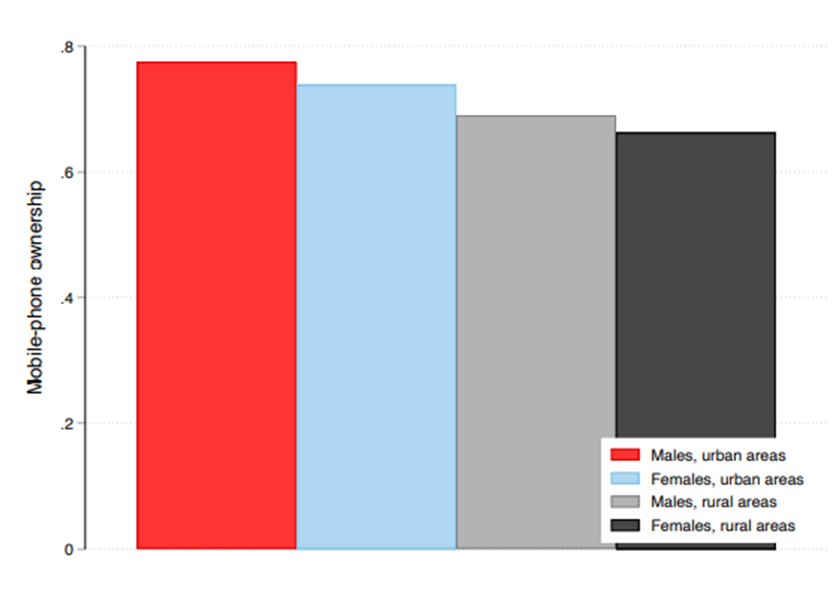
La proporción de personas que poseen teléfonos celulares en los países analizados aumentó a alrededor de 80% en el 2017 desde 45% en el 2006, según los datos anuales de la encuesta Gallup, y la brecha de género en la posesión de celulares disminuyó en la última década. Pese a ello, volvió a empeorar en los últimos cinco años.
Pese a que en la mayor parte de los países hay brechas de género, el estudio mostró excepciones. Mientras Argentina y Brasil tienen casi una situación de paridad, Guatemala y Perú son ejemplos de naciones en las que la brecha de género es mayor, en tanto que en Chile y en Uruguay la proporción tiende a favorecer a las mujeres.
“La rápida difusión de los teléfonos celulares ha mostrado potencial para reducir la exclusión digital y afectar positivamente la economía y el desarrollo social. Para muchas personas, dispositivos móviles son computadoras baratas, fáciles de usar y eficaces, que permiten comunicarse, acceder a información y obtener acceso a servicios vitales vinculados a la salud, la educación y la economía o a vender su producción”, dijo Rotondi.
“Pese a los avances, las mujeres aún están postergadas en el acceso digital. De acuerdo con el último informe divulgado por la Unión Internacional de Telecomunicaciones (UIT), en la mayoría de los países las mujeres aún están atrás de los hombres en el sentido de beneficiarse del poder transformacional de las tecnologías digitales. Más de la mitad de la población femenina global (52%) todavía no usa Internet, en comparación con 42% de todos los hombres”, agregó Rotondi, quien analizó datos de la Encuesta Mundial Gallup (2017) asociados a informaciones proporcionadas por celulares.
El estudio enfocó en la correlación entre brechas de género en la posesión de teléfonos respecto a tres medidas de empoderamiento utilizadas por la Organización Mundial del Trabajo (OIT): proporción de tasa de empleo vulnerable femenino en relación con el masculino; proporción de la fuerza de trabajo femenina en relación con la masculina, y proporción de desempleo juvenil femenino en relación con el masculino (medidas en el 2019).
El estudio concluyó que, de modo general, cuanto menor es la brecha de género en la posesión de celulares, mejores son las perspectivas para la inserción de las mujeres en el mercado de trabajo y menores son las disparidades entre los géneros en trabajos vulnerables y desempleo juvenil.
En cuanto a los usos de las redes sociales, se utilizaron datos de seguimiento digital sobre la composición por género de los usuarios de Facebook (obtenidos en febrero de 2020) para medir la brecha de género en la conexión en redes. Facebook fue elegida por ser la red social más utilizada en la región.
El resultado mostró que las tasas de penetración de Facebook entre hombres y mujeres en América Latina están bastante equilibradas en comparación con países de África subsahariana y Asia, pero también hay diferencias.
En Brasil, Argentina, Venezuela, Colombia, Surinam, Uruguay y Paraguay las mujeres tienen más probabilidades de ser usuarias de Facebook, mientras que en México, Nicaragua y Guatemala, los hombres son más activos en Facebook.
El trabajo coordinado por Rotondi se centra en la denominada exclusión digital de primer nivel, es decir, mide el acceso a las TIC y destaca la necesidad de avanzar en la investigación de segundo nivel, que se refiere a datos referentes a competencias necesarias para la utilización más plena de las tecnologías.
PUNTOS PRINCIPALES DE LA INVESTIGACIÓN
-Existe una brecha de género en el acceso a las tecnologías de la información y las comunicaciones en América Latina y el Caribe que ha ido disminuyendo paulatinamente pero que en los últimos años ha dejado de caer;
-La propiedad de teléfonos móviles entre la población de los países analizados aumentó a alrededor del 80% en 2017 desde un 45% en 2006;
-En 17 de los 23 países analizados es menos probable que las mujeres relaten que tienen un teléfono móvil que los hombres;
-Las mujeres que viven en zonas rurales son las menos “conectadas”;
-En los países en los que las brechas digitales de género son menores también son más bajas las brechas de género en el empleo vulnerable, en el desempleo juvenil y en la participación en la fuerza laboral;
-Algunos países, como Argentina y Brasil, casi han logrado una plena equidad de género en la posesión de teléfonos celulares. En otros, como Guatemala y Perú, las mujeres todavía están en desventaja. En Chile y Uruguay la proporción tiende a favorecer a las mujeres.
PAÍSES ANALIZADOS – POSESIÓN DE TELÉFONO CELULAR POR GÉNERO
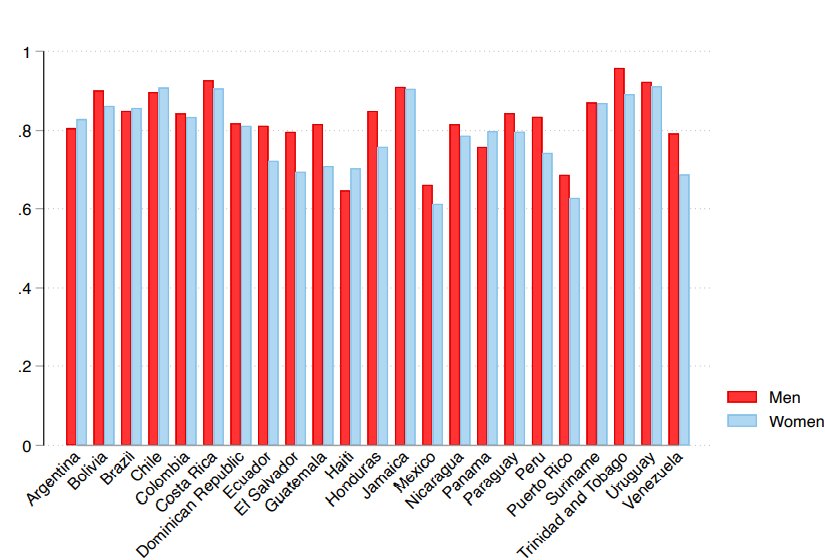
Autores del estudio
Valentina Rotondi (Científica social con una mirada interdisciplinaria, es especialista en la interacción entre población, desarrollo y cambio tecnológico. Doctorada en Economía en la Universidad Católica de Milán, es investigadora posdoctoral en la Universidad de Oxford).
Francesco Billari (Sociólogo, profesor de Demografía en la Universidad Bocconi, de Milán, y decano de esa casa de estudios. Miembro de la Academia de Ciencias Sociales del Reino Unido, su área de investigación es el cambio poblacional y las dinámicas familiares).
Luca Pesando (Doctorado en Demografía y Sociología por la Universidad de Pennsylvania, es profesor en la Universidad McGill, de Montreal. Es investigador en el campo de la demografía económica y social y sus intereses incluyen pobreza familiar, desigualdad y estratificación).
Ridhi Kashyap (Doctorada en Sociología, es profesora de Demografía Social en la Universidad de Oxford. Género, mortalidad y salud; la diversificación de las formas familiares y etnicidad y migración se incluyen entre sus temas de investigación).
Más información:
Gerencia de Comunicación Institucional del IICA.
comunicacion.institucional@iica.int
